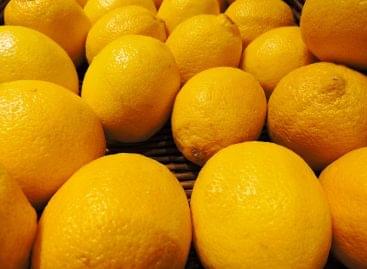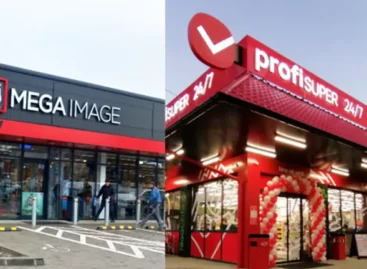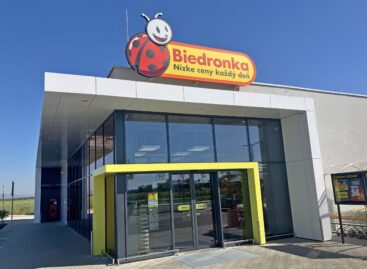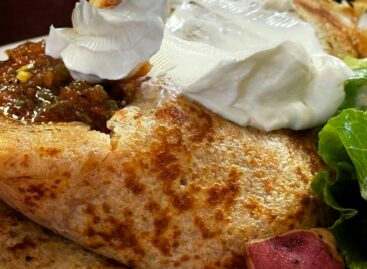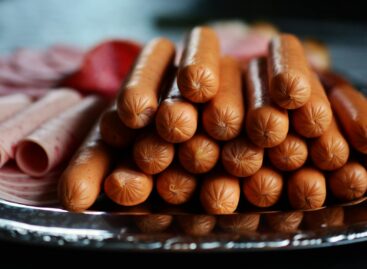Inside La Cocoș: ‘Buy More, Pay Less’ warehouse-style retail for brands only
The following store visit report offers a visual deep dive into the unique retail concept of La Cocoș: Romania’s fastest-growing hypermarket operator and recent acquisition target of Germany’s Schwarz Group.

Sebastian Rennack
international retail analyst
Aletos Retail
Unlike traditional formats, La Cocoș combines high-volume merchandising with an industrial, no-frills store layout that enables operational efficiency and competitive pricing.
These photos, taken at the Ploiești location, illustrate how La Cocoș achieves category clarity, price perception, and shopper throughput through its distinctive BMPL (Buy More, Pay Less) pricing model, limited but strategic assortment, and pallet-based execution.
The visit also reveals high importance of national sourcing combined with brand orientation – elements that have helped La Cocoș outperform larger competitors on revenue per store and profitability.
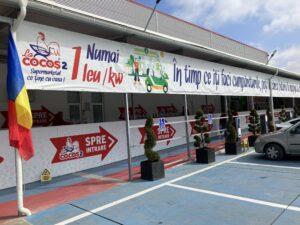
La Cocoș storefront in Ploiești with the chain’s signature red logo and rooster-cart mascot. Romanian flags highlight strong national identity in a grocery market dominated by international players.
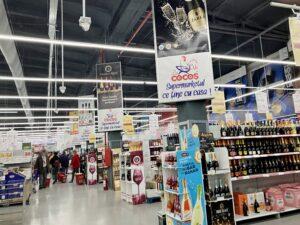
“Supermarketul ce ține cu casa” (“The supermarket that stands by your household”). A no-frills interior – even for high-involvement categories such as alcohol – is to reflect that cost savings are passed on to the customer.

The self-service fresh section with low chillers offers a good overview of the assortment in the wall chillers. Wall advertisements highlight domestic brands.
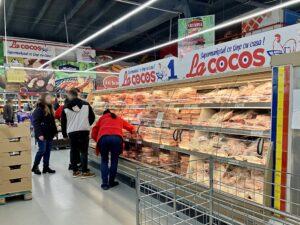
The meat section, showcases large quantities of vacuum and MAP-packed fresh meat cuts, with large packages of more than 1 kg dominating. Also here the Romania flag hints at a sourcing from domestic suppliers.
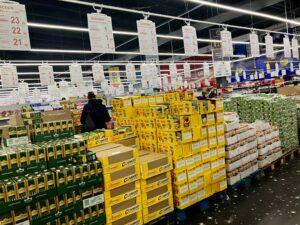
In the ambient section mono pallets and staggered prices with a high visibility make for quick and easy choice.
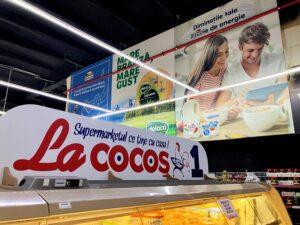
La Cocoș signposts its commitment to support Romanian shoppers repeatedly in every department in the store.
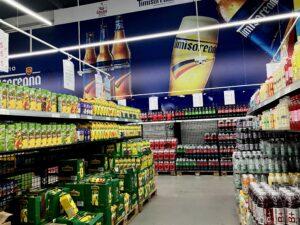
The beverage segment is dominated by international brands while promoting local beer manufacturers.
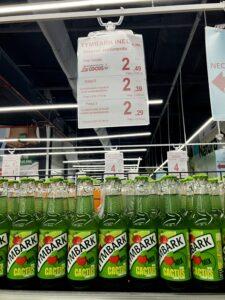
Polish supplier Tymbark represents one of the most visible brands in the section.
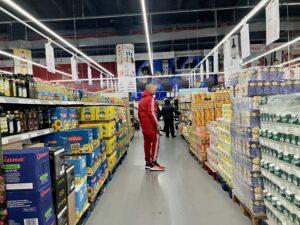
The general merchandising rule is 1 pallet = 1 SKU. Pallet streets make orientation easy for customers and merchandising efficient for store staff.
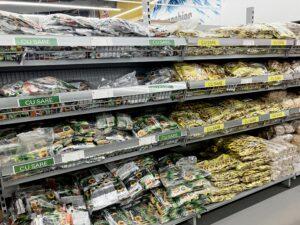
Customer-facing communication is reduced to an absolute minimum ‘Cu Sare’ (with salt) differentiates sunflower seeds merchandised unceremoniously in mesh wires baskets in the snack section from unsalted products.
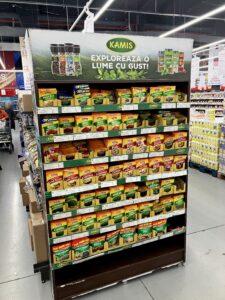
Also in the dry departments category leaders from other countries are prominently displayed, as here Kamis spices assortment from Poland on a gondola end.
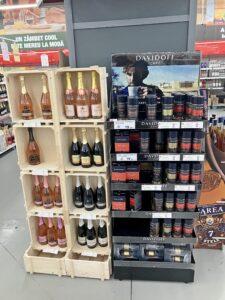
No-frills doesn’t mean low quality. Here Davidoff coffee is displayed side-to-side with sparkling wine from the famous Moldovan winery Cricova.
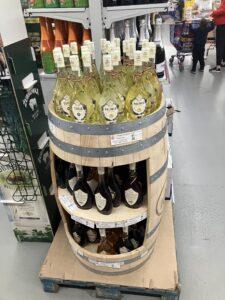
The simplicity of overall product merchandising makes more elaborate displays like this wine barrel stand out.
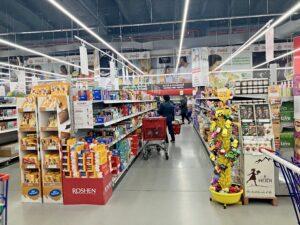
In the sweets section in-out displays of brand producers such as Romanian gourmet chocolate manufacturer Heidi next to the domestic Rom brand and Ukrainian Roshen products emphasize branded value-for-money.
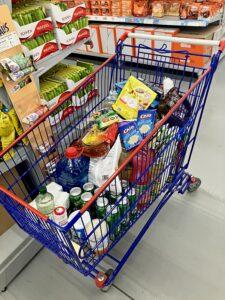
The format invites for the one-stop-shopping mission and large baskets.
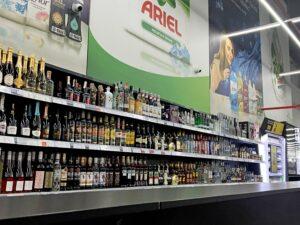
High-value spirits are sold from a dedicated counter in the checkout area.
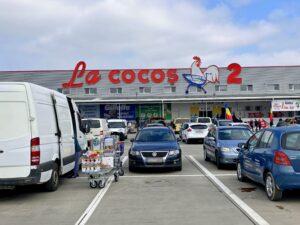
Customers seem to take advantage of the opportunity to buy directly in shelf-ready packaging units.
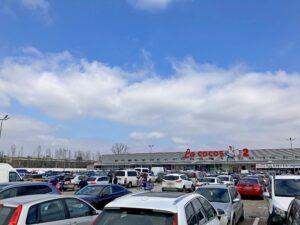
In comparison to other large-area operators customer traffic seems to be at an all-time high – even without the incentive of dedicated flyers or daily promotions.
Related news
Fodder fruit sold as a premium: double quality in Romania, reputational risk in the region
🎧 Hallgasd a cikket: Lejátszás Szünet Folytatás Leállítás Nyelv: Auto…
Read more >Romania’s Mega Image And Profi Rom Food Announce Merger
🎧 Hallgasd a cikket: Lejátszás Szünet Folytatás Leállítás Nyelv: Auto…
Read more >A new format for Slovakia: Biedronka blends food retail with drugstore assortment
🎧 Hallgasd a cikket: Lejátszás Szünet Folytatás Leállítás Nyelv: Auto…
Read more >Related news
New Year’s Eve: shortened opening hours in stores – general store closure on January 1
🎧 Hallgasd a cikket: Lejátszás Szünet Folytatás Leállítás Nyelv: Auto…
Read more >Tejföl is only a name for live flora: new categories for sour dairy products will be introduced from 2026
🎧 Hallgasd a cikket: Lejátszás Szünet Folytatás Leállítás Nyelv: Auto…
Read more >Sausage prices before New Year’s Eve: cheap entry, expensive premium – how big is the gap on the shelves?
🎧 Hallgasd a cikket: Lejátszás Szünet Folytatás Leállítás Nyelv: Auto…
Read more >
